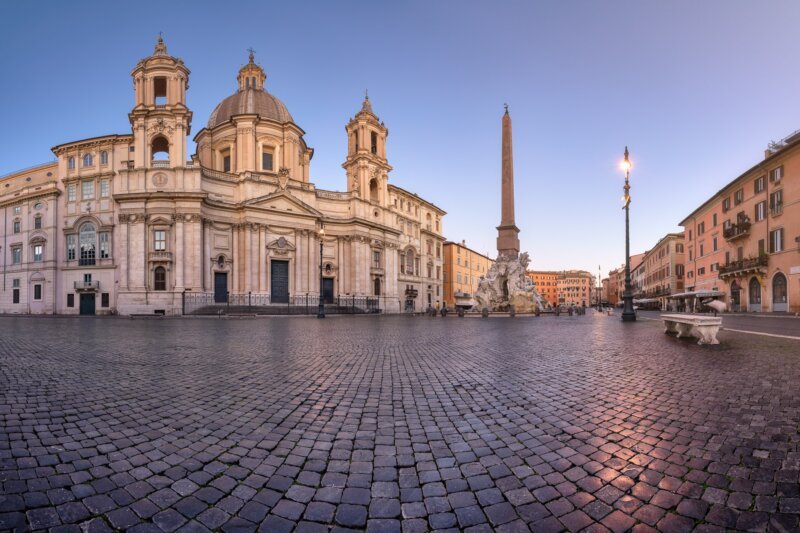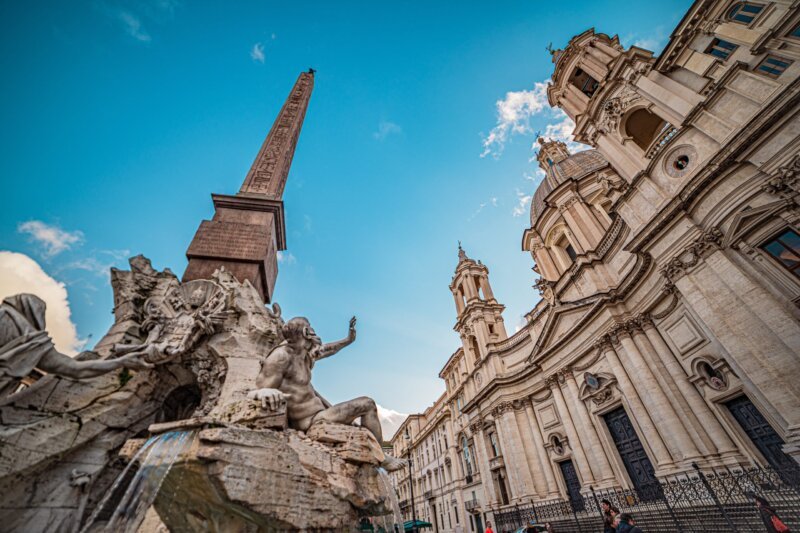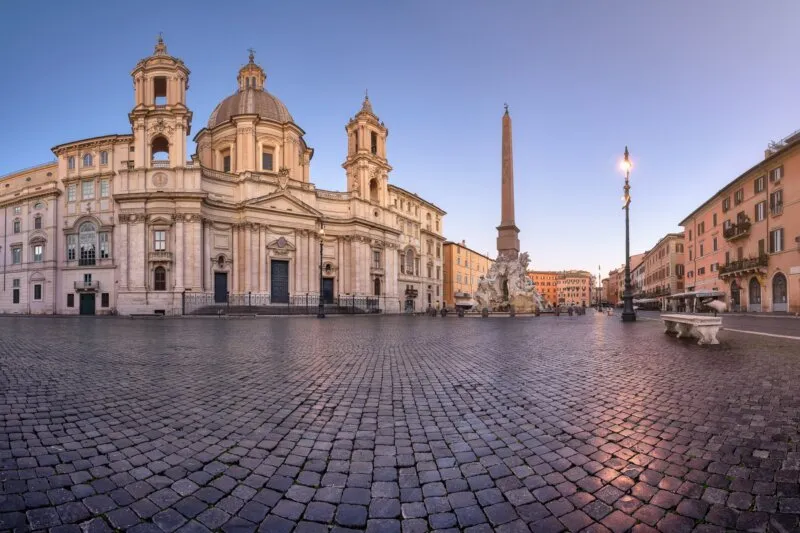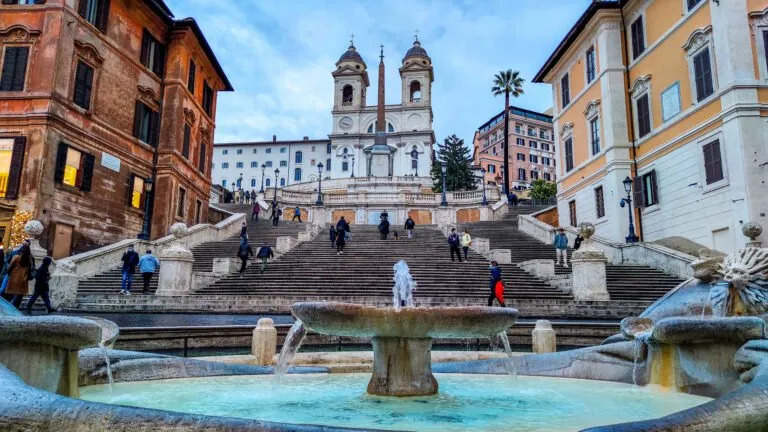Piazza Navona, Rome
Of the numerous squares in Rome, Piazza Navona is definitely one of the most beautiful and aesthetically appealing. It was built by king Domitian in 86 AD and retains the shape of the ancient Stadium of Domitian even today. Piazza Navona represents one of the most popular and most characteristic centers of Rome. It was built in monumental style by the family of Pope Innocent X (Pamphili). It sums up the Roman style of the 17th century. It is enormous and was built around ruins. Under the square is buried the ancient Circus Domitianus or Domitian’s stadium. The piazza is actually built on where races were held in the stadium. The stadium used to hold the Agonal games. The piazza gets its name from this event – it went from in agone to n’agone to navone and finally got its current name, Navona. A part of the stadium is still on display near the square’s northern exit, and apart from that, the piazza has beautiful old buildings, an ancient church, and three spectacular fountains. This church site is important as it was here that the 12-year-old Christian refused to marry Agnes, who was a pagan and was martyred where the church is located today.

Of the three fountains, the central one is the famous la Fontana dei Fiumi or Fountain of the Rivers. Commissioned by Pope Innocent X as a setting for the obelisk that rises at its center, Bernini sculpted some of his pupils in 1660-51. The four statues placed around the grotto at the foot of the obelisk represent four rivers from four different parts of the world: the Ganges, symbolizing Asia, the Nile (Africa), the Danube (Europe), and the Rio della Plate (America).
At the southern end of the Piazza Navona is Fontana del Moro, the Fountain of the Moor, originally designed by Della Porta but later modified by Bernini and Giovanni Mari. Bernini designed the central statue in the 17th century. The statue depicts a Moor holding a dolphin.
At the other end of the piazza is Fontana di Nettuno or the Fountain of Neptune, also known as the Calderari. Originally designed by Della Porta in 1576 and partially realized by Bernini, this fountain long remained incomplete. It was not completed until 1878 when the sculptor Antonio Della Bitta added Neptune’s statue surrounded by sea nymphs from which it takes its name.

Borromini and Rainaldi designed the church of Sant’Agnese that Pope Innocent X commissioned in 1652. Borromini took control of the construction, and several features, including the façade, were his creations. Construction was completed in 1670, and it is believed that Bernini’s statue in front of the church looks away from it as a symbol of the often bitter competition between the two architects. Although this makes an interesting story, experts believe that the statue was built before the church. But there is a single statue on the façade that looks away from the fountain. Either way, we still have a story!
The Church of San Giacomo degli Spagnoli, the Palazzo Lancellotti, and the Palazzo Pamphilj complete the piazza. Rainaldi built the Palazzo Pamphilj for Innocent X in 1650. It is now the Brazilian Embassy and contains a large hall with frescoes by Pietro da Cortona. Adjacent to the piazza are two other churches; the church of Santa Maria dell’ Anima (16th century) and Santa Maria della Pace (15th century).
The square is a lively place with scores of cafes, restaurants, and nightclubs. It is the hub for tourists and locals to meet, mingle, and party. If you come here in summer, you can get an artist to sketch you. There are also many performing artists here every day. Take your time to look around and take in the atmosphere at this all-year-round tourist destination.

